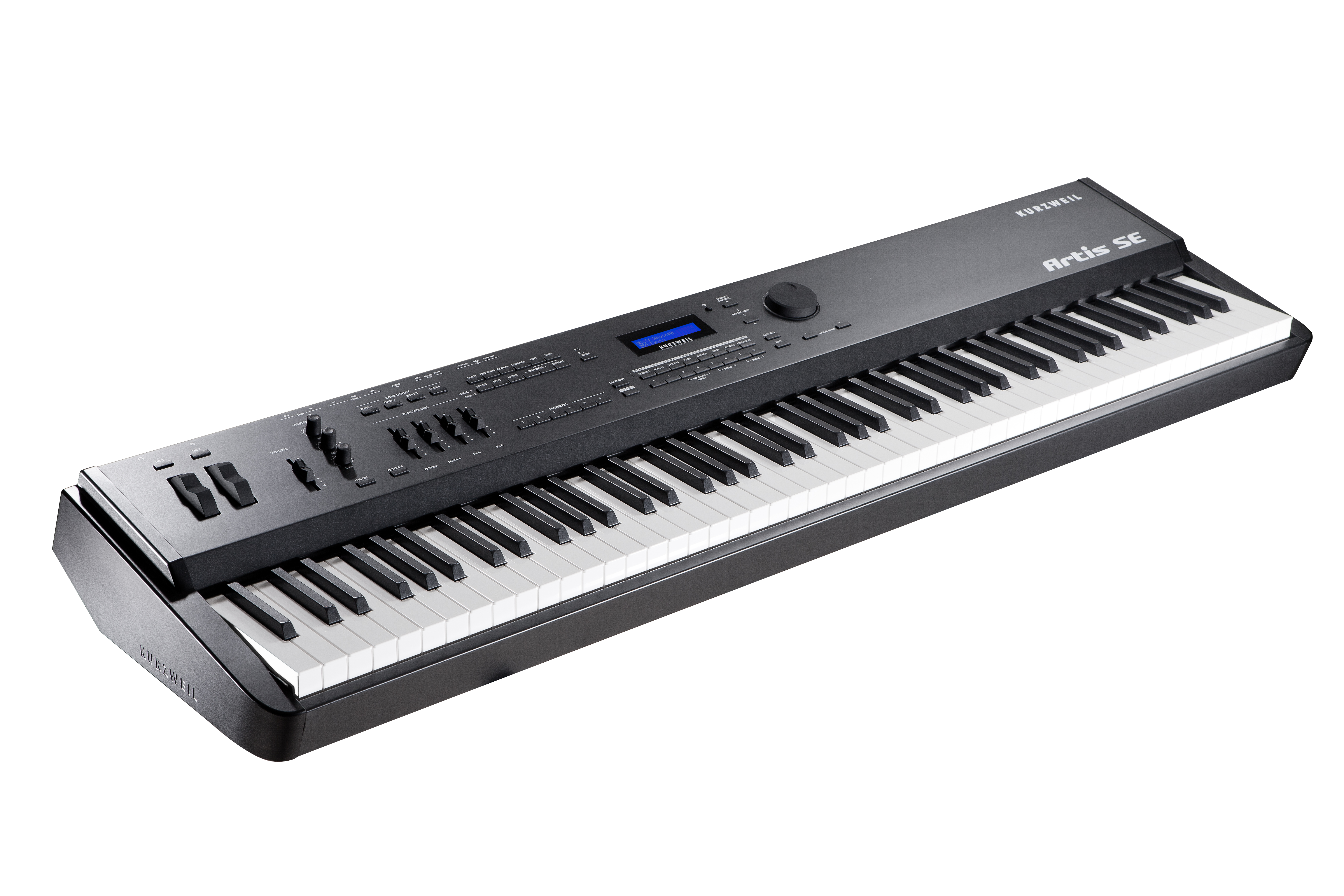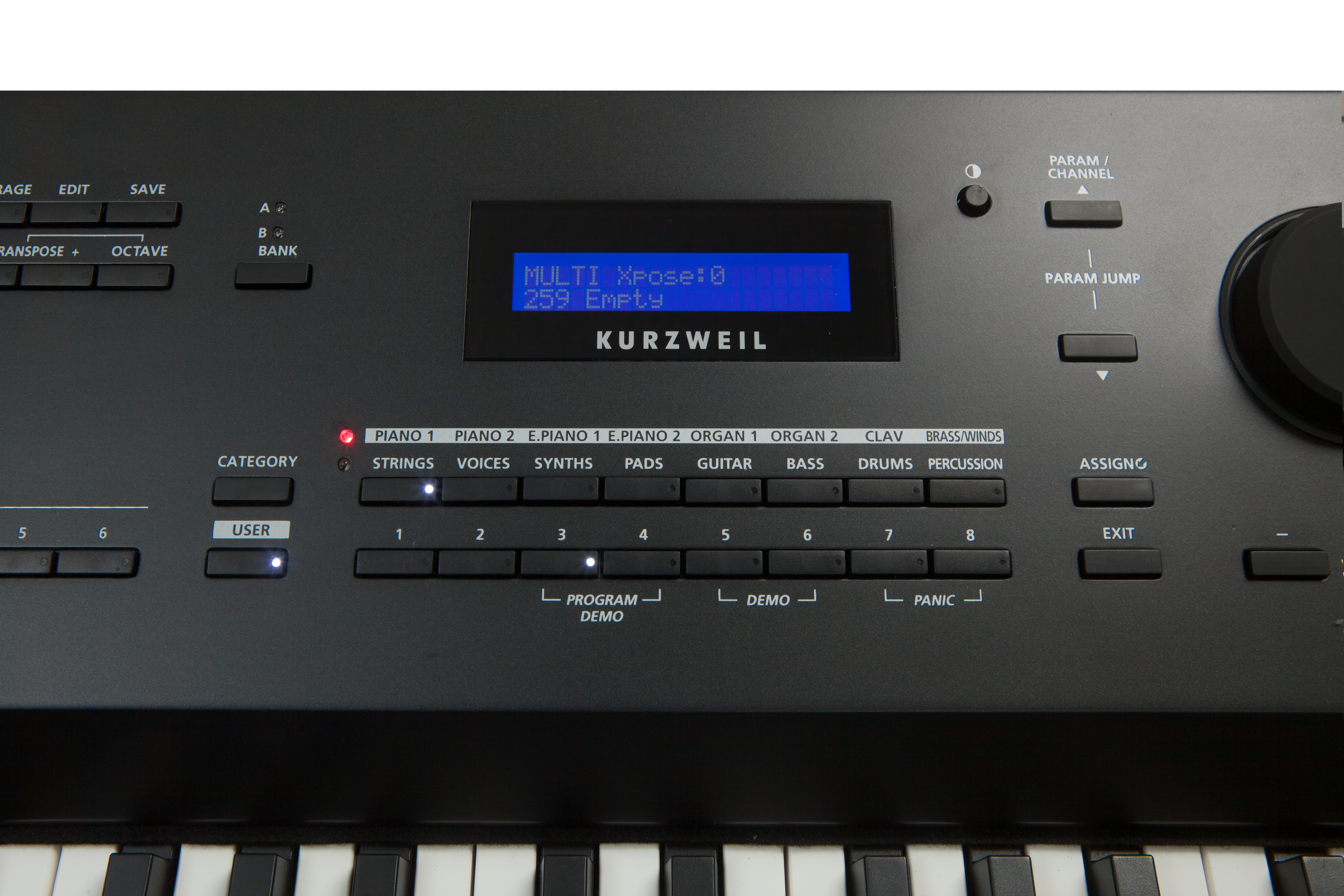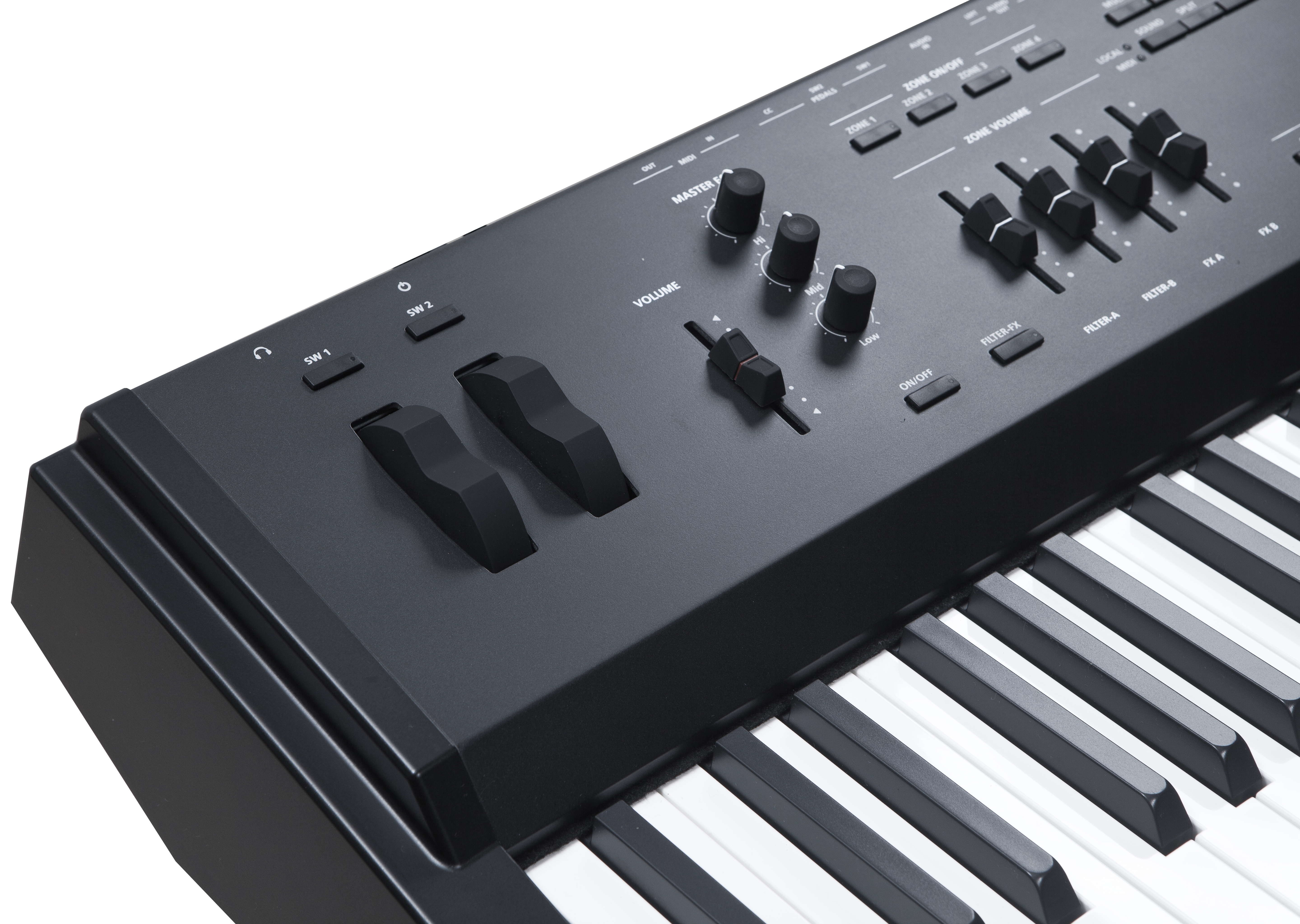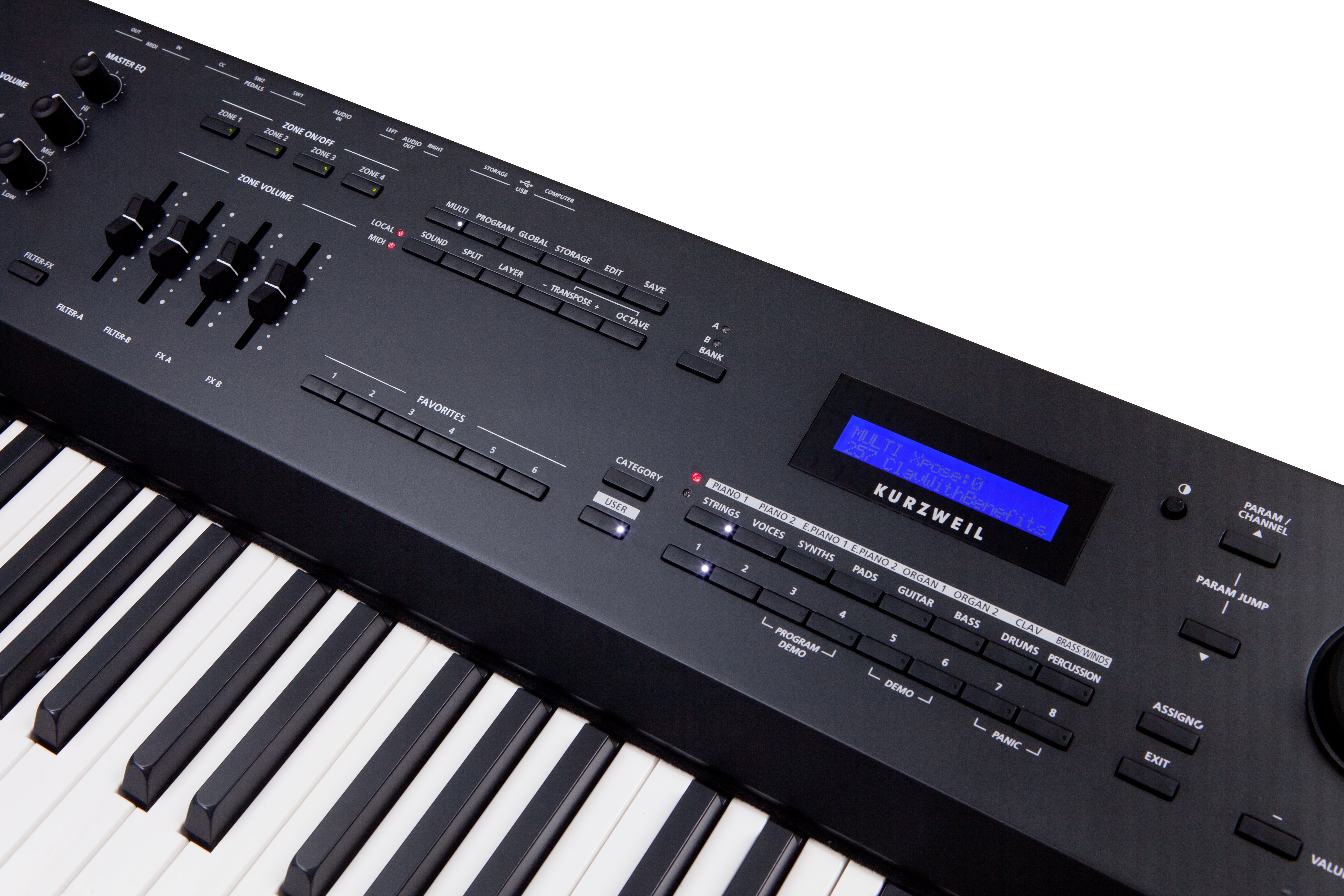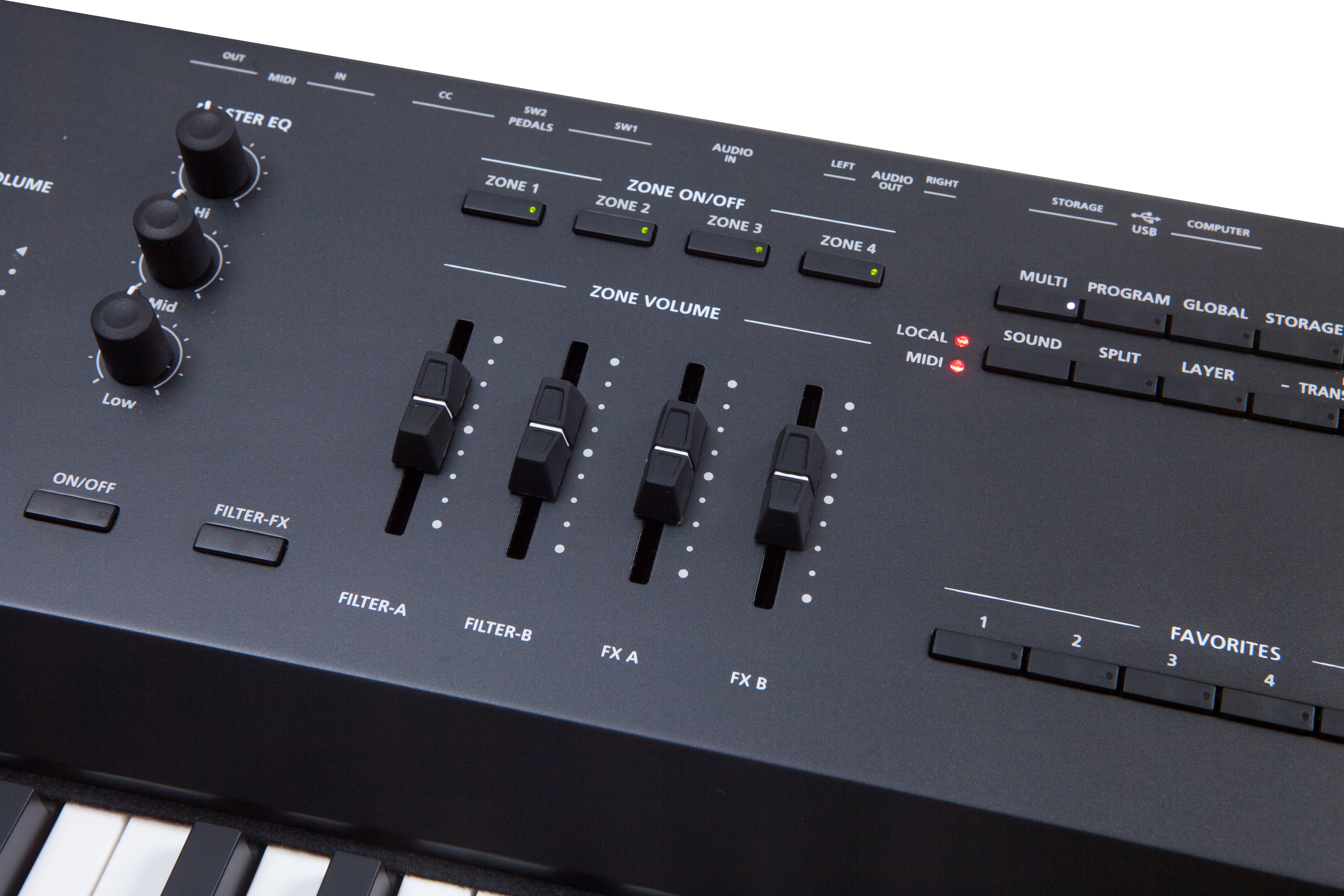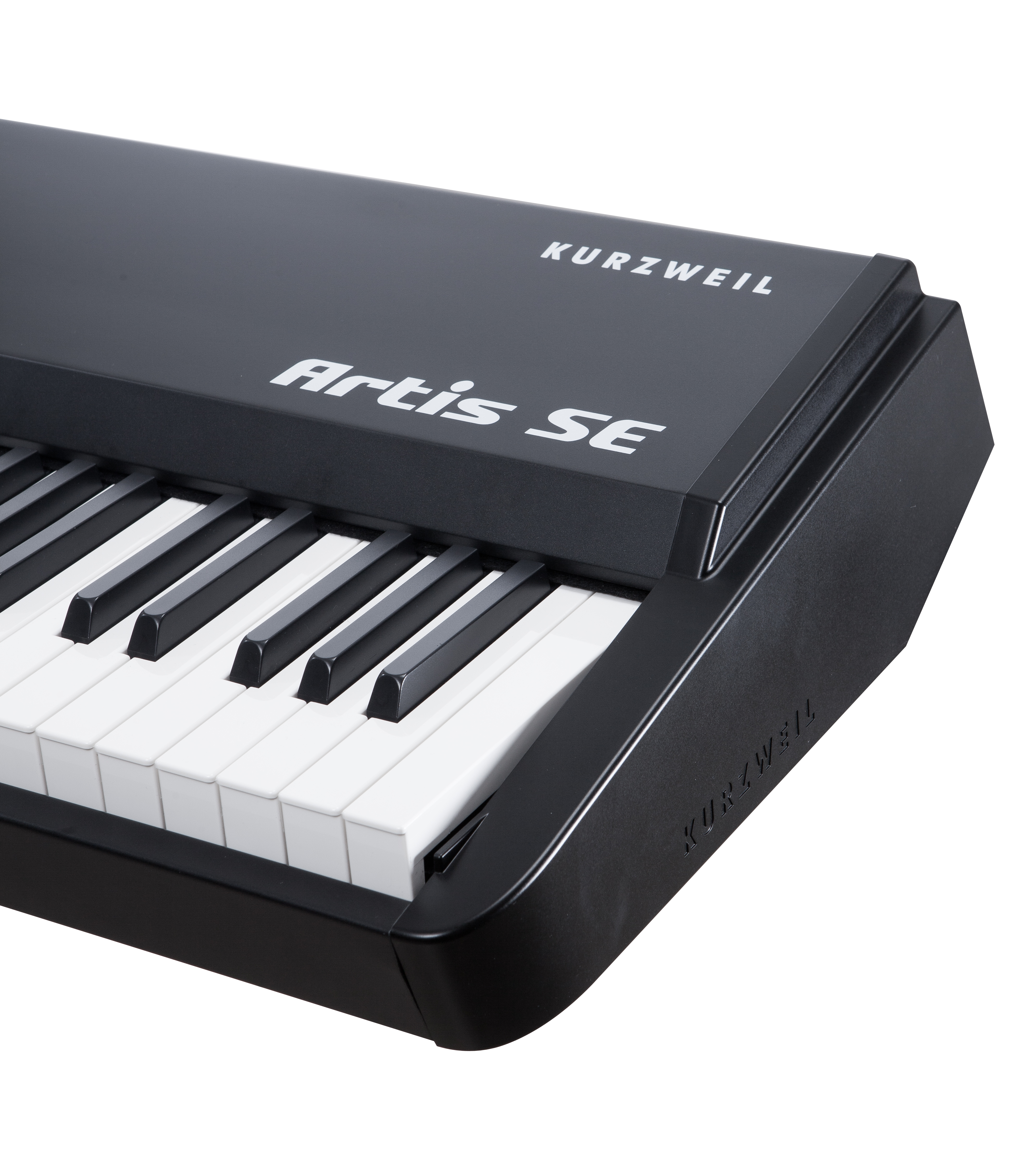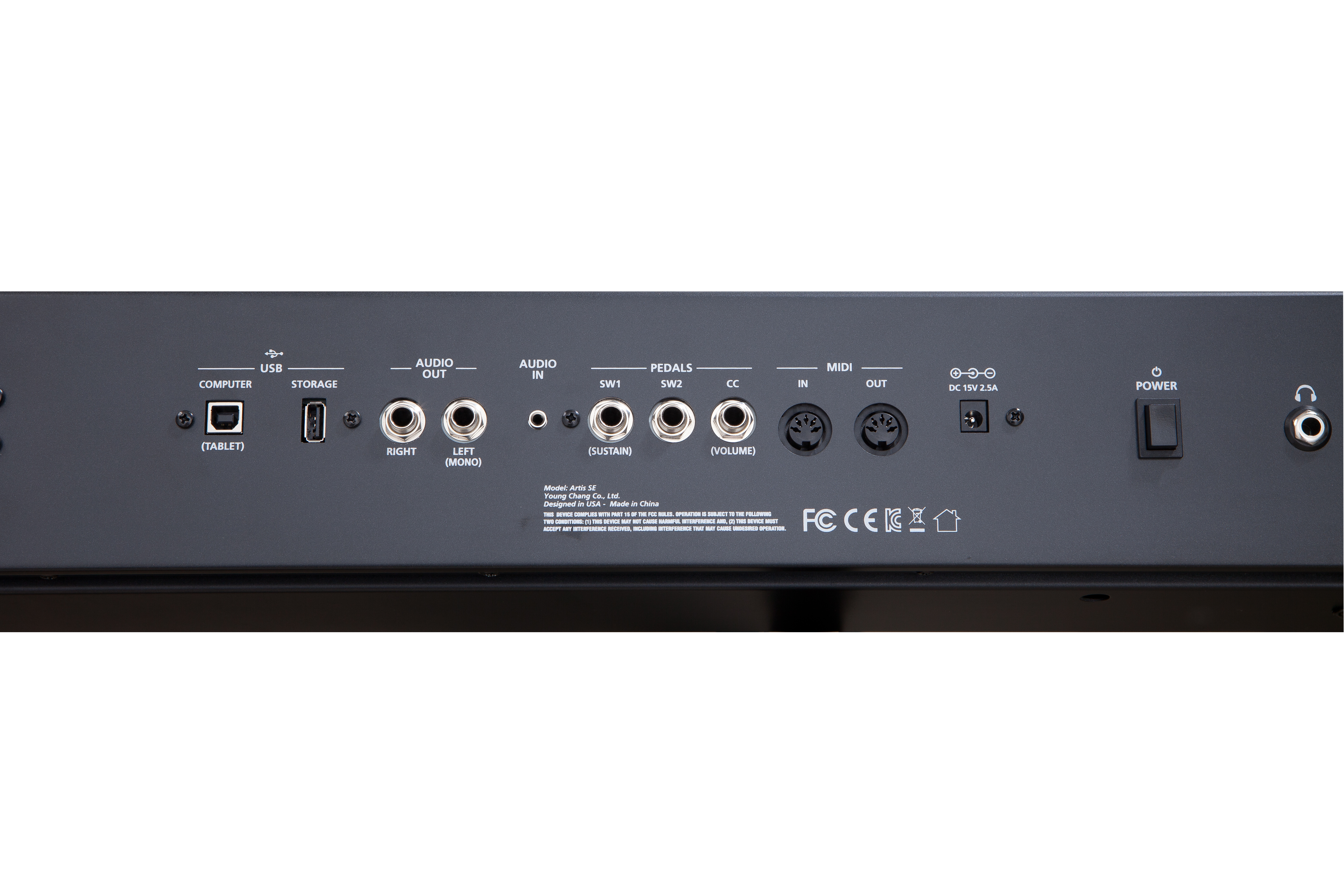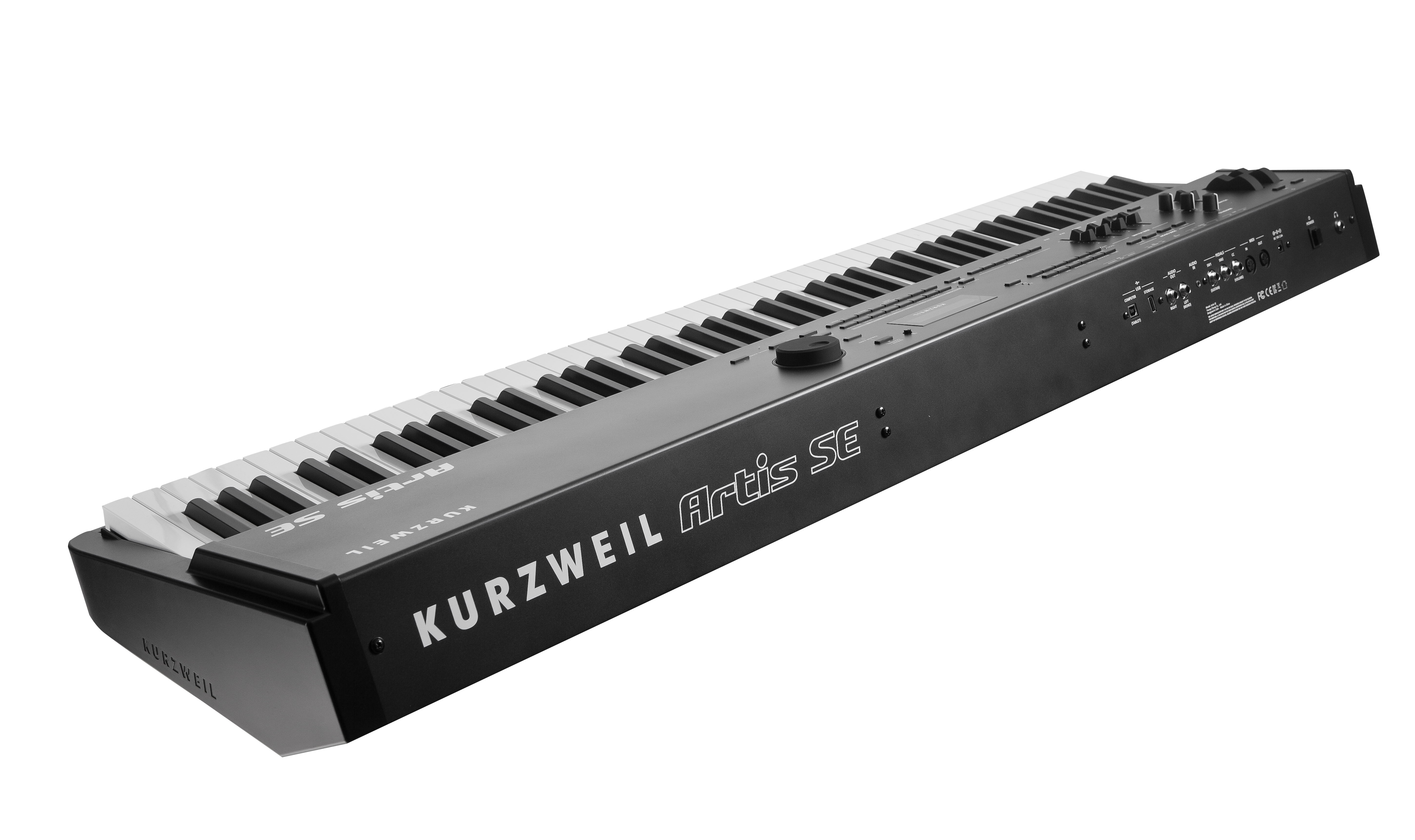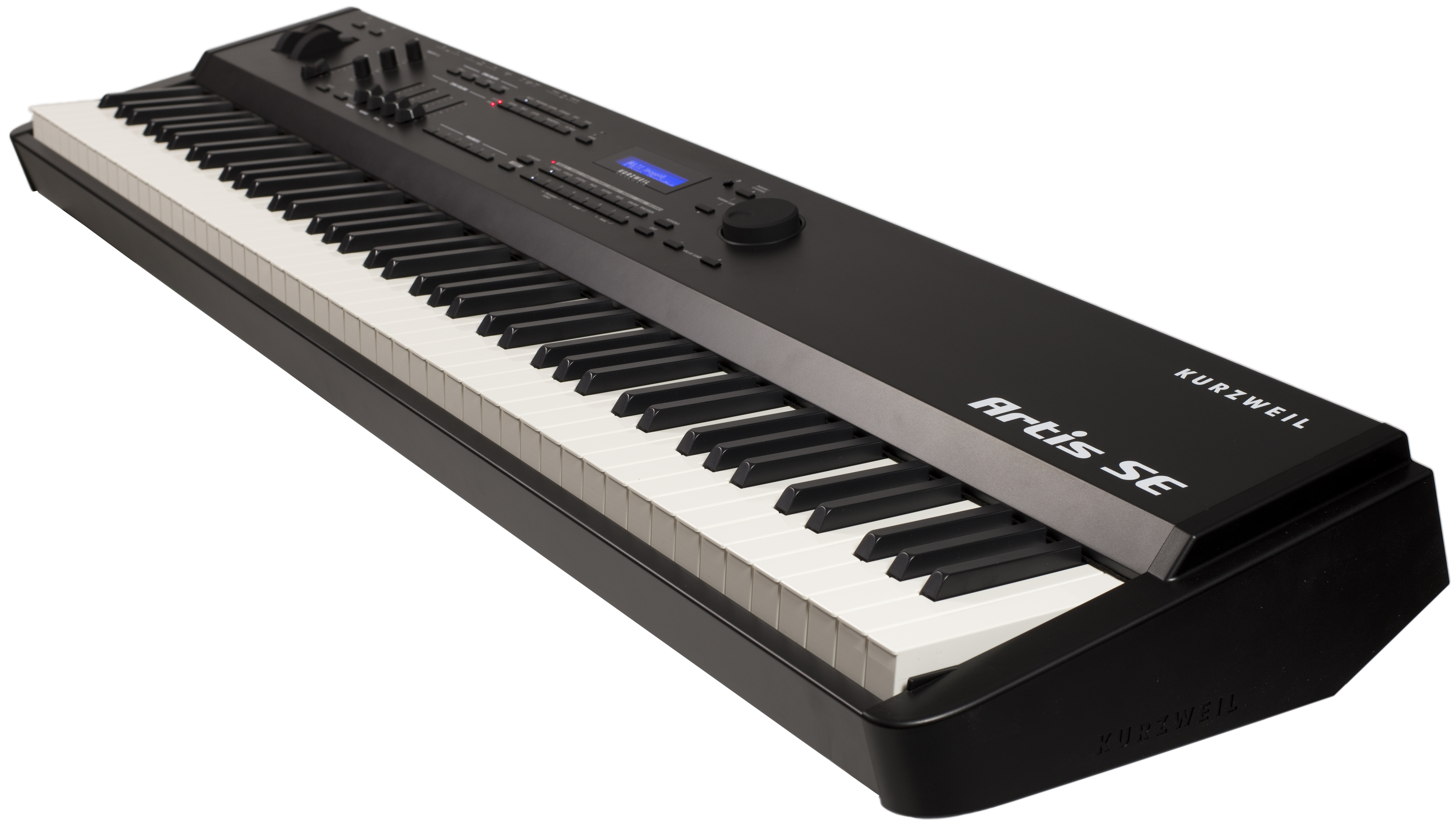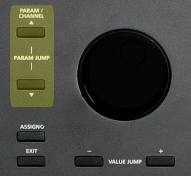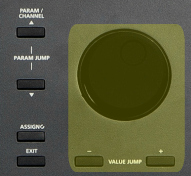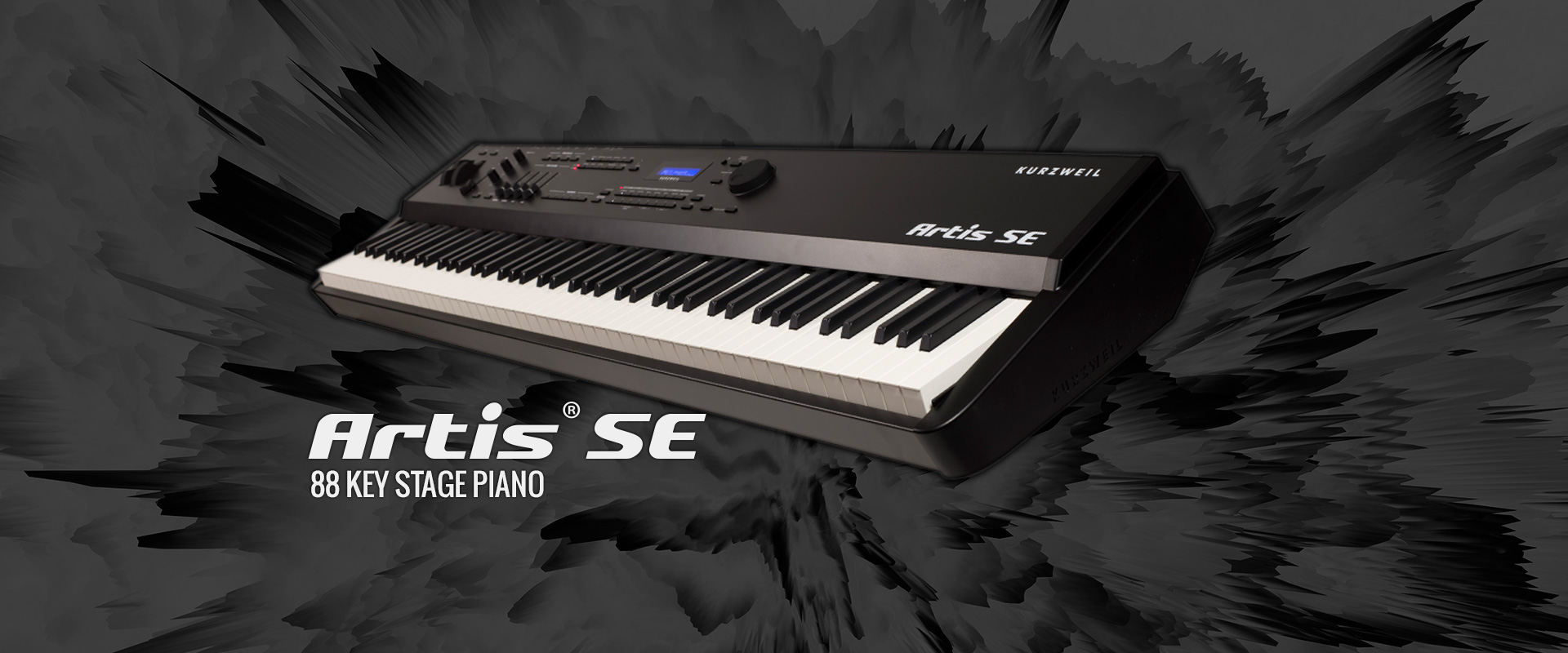
Legacy Model
Downloads and support materials maintained here as a courtesy to owners.
OVERVIEW |
Following the standard of sonic excellence established by the Artis® and Forte®, the Artis® SE helps you realize a high level of performance with its astonishing sound quality, dependability and user-friendly operation.
SOUNDS
German 9′ Grand Piano
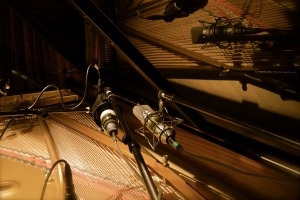
Amazing tone, realism, and expression far beyond what you thought possible in a stage piano. Perfectly matched with a weighted Fatar TP-100 action.
128 Factory Multis
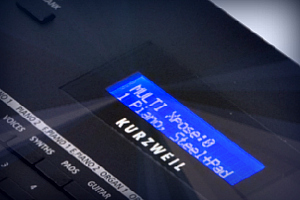
Power-up straight into Multi mode ready for performance. Our expertly programmed factory Multis will have your inspiration up and running in no time! Up to 4 zones, split/layer, extensive MIDI control, individual zone volume and mutes, and filter/FX control.
256 Factory Programs
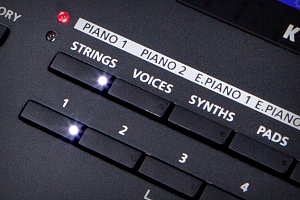
From classic to modern. The best sounds from our PC3K and KORE 64 collections plus our NEW piano, Vintage Electric Pianos, Clavinets, Synthesizers, rich and realistic String Sections and Orchestras, Guitars, Percussion and much more.
Powerful FX Engine
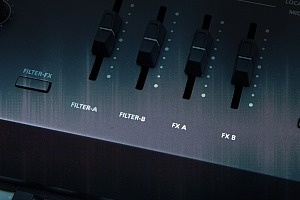
Dedicated front-panel sliders offer control of our award-winning effects.
CONTROLS
Front Panel 3-Band Master EQ

Room too boomy? No problem. Dial it in with the dedicated front panel EQ (features a convenient on/off switch).
11 Programmable Physical Controllers
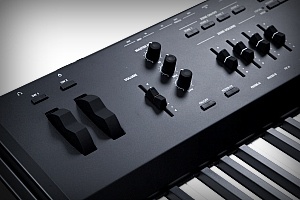
Pitch and mod wheels (mounted on the front panel), 4 Sliders, 2 Switches, 2 Switch Pedal Inputs, and 1 Continuous Control Pedal Input facilitate a variety of performance options.
(1 sustain/switch pedal is included).
Instant Transpose
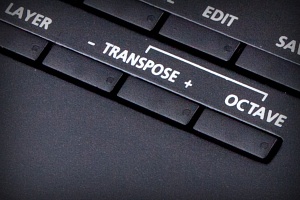
Dedicated -/+ controls for both semitone and octave adjustment conveniently located right on the front panel.
USER INTERFACE
Sound Selection
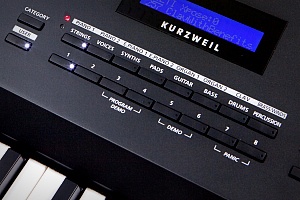
Sound selections are instantly accessible with buttons located below the display.
All specifications subject to change without notice.
Favorites Section
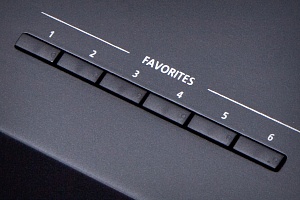
Bookmark and access your 6 Favorite sounds with ONE button press!
Software Editors
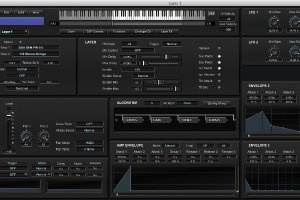
Get deeper into editing your Artis Programs and Multis.
SPECS |
All specifications subject to change without notice.
| Keyboard: | 88 note fully-weighted hammer-action with velocity sensitive keys (Fatar TP/100LR) |
| Display: | 2×20 character LCD w/ front-panel contrast adjust |
| Polyphony: | 128 Voice Polyphony, dynamically allocated |
| Multitimbral: | 16 parts (one per MIDI channel) |
| Quick Split/Layer: | Easy access with adjustable relative volume (up to 4 zones) |
| Factory Programs: | 256 stunning factory Programs featuring the all new German Grand Piano along with a wide selection of sounds from the acclaimed PC3 and KORE 64™ expansion |
| User Programs: | 256 |
| Factory Multis: | 128 factory-crafted Multis – featuring up to 4 independent zones |
| User Multis: | 256 |
| General MIDI: | No |
| Master EQ Section: | Dedicated front-panel 3-band EQ with on/off switch |
| Effects: | • Over 1000 complex effect chains, incorporated into programs featuring our award winning effects – reverbs, delays, chorus, flange, phaser, EQs, distortions, rotary speaker simulators, compressors, and more • 16 total FX units (chains can not be edited, but a chain can be selected in Multi Mode) |
| Controllers: | • Front panel-mounted pitch and mod wheel • 4 sliders • 2 programmable switch buttons • 2 Dedicated transpose switches • 2 switch pedal inputs** (1 switch/sustain pedal is included) • 1 continuous control pedal input(** Each switch pedal input supports a single or dual switch pedal, or a single half-damper* pedal. Half-damper for MIDI output only.) |
| Analog Outputs: | • Two 1/4″ balanced TRS analog (24-bit DACs) • +21dBu maximum output • 400Ω balanced source impedance |
| Audio Inputs: | One stereo 1/8″ back-panel input for connecting your favorite MP3 player or other audio source for accompaniment playback |
| Headphones: | • 1 rear panel 1/4″ headphone output • 130mW into 32 ohm headphones |
| MIDI: | In, Out |
| USB: | • Complete MIDI functionality over USB • User program/multi file transfer to/from PC/Mac/Flash Drive • Operating System updates from PC/Mac/Flash Drive |
| FREE OS Updates: | OS updates over USB and/or Flash Drive |
| Included Accessories: | Power cable, Switch pedal, USB cable, (4) self adhesive feet |
| Height: | (5.87″) (14.9cm) |
| Depth: | (14.80″) (37.6cm) |
| Length: | (50.63″) (128.6cm) |
| Weight: | (38.6 lb.) (17.5 kg) |
| Power: | External DC 15V 2.5A Power Supply |
VIDEOS |
Artis PlugSE
Overview of SoundTower’s Artis DAW Plugin for the Mac/PC
Artis SE demonstration
by www.muzykuj.com
Artis SEnsation
rtis SE Demo Video – by Sound-Service.eu
FAQs |
Basic Concepts & User Interface
Global Mode
MIDI Controllers
Multi Mode
Product Comparisons
Program Mode
Storage Mode
Troubleshooting
DOWNLOADS |
User Manuals
Artis SE Getting Started Guide – 952 KB
Quick Start Guide (Rev 5)
2014-11-17
Artis SE Musician’s Guide – 5.9 MB
Primary owner’s manual (Rev B)
2018-08-08
Artis SE Musician’s Guide – E-Book – 3.8 MB
Primary owner’s manual (revB) – .epub format for e-readers and mobile devices
2018-08-08
Artis SE – KB3 MIDI CC Chart – 61 KB
Listing of KB3 MIDI Controllers (.pdf)
2017-06-05
SoundTower – Sound Editor User Guide – 7 MB
PC3 Series Desktop Editor Operating Manual
(applicable to all Kurzweil desktop software editors)
2015-05-28
SoundTower – Artis PlugSE™ Manual – 4.6MB
Operating manual for the Artis, Artis7 and Artis SE PlugSE software.
2015-06-09
OS Updates
Artis SE v1.11 Update – 4.0 MB
Contains: O/S 2.50.1816, Objects 1.00.7, Installation Instructions, Release Notes
2018-08-08
Software Editors
Artis SE – Desktop Editor (Mac) – 9.6 MB
v2.90 of the Artis SE desktop editing software for the Mac
(requires Artis SE OS v1.02)
2015-05-22
Artis SE – Desktop Editor (PC) – 6.0 MB
v2.90 of the Artis SE desktop editing software for the PC
(requires Artis SE OS v1.02)
2015-05-22
Artis SE – iPad Editor – 55.4 MB
(links to App Store store for download)
2015-06-10
Artis SE – PlugSE (PC/VST- 32bit) – 6.2 MB
v1.0.4 of the Artis SE Plug-in – (VST format in 32-bit)
(requires Artis SE OS v1.02)
2015-06-09
Artis SE – PlugSE (PC/VST- 64bit) – 6.3 MB
v1.0.4 of the Artis SE Plug-in – (VST format in 64-bit)
(requires Artis SE OS v1.02)
2015-06-09
Artis SE – PlugSE (Mac OSX – 32/64bit) – 30.1 MB
v1.0.4 of the Artis SE Plug-in – (VST and AU formats in 32 and 64-bit)
(requires Artis SE OS v1.02)
2015-06-09

